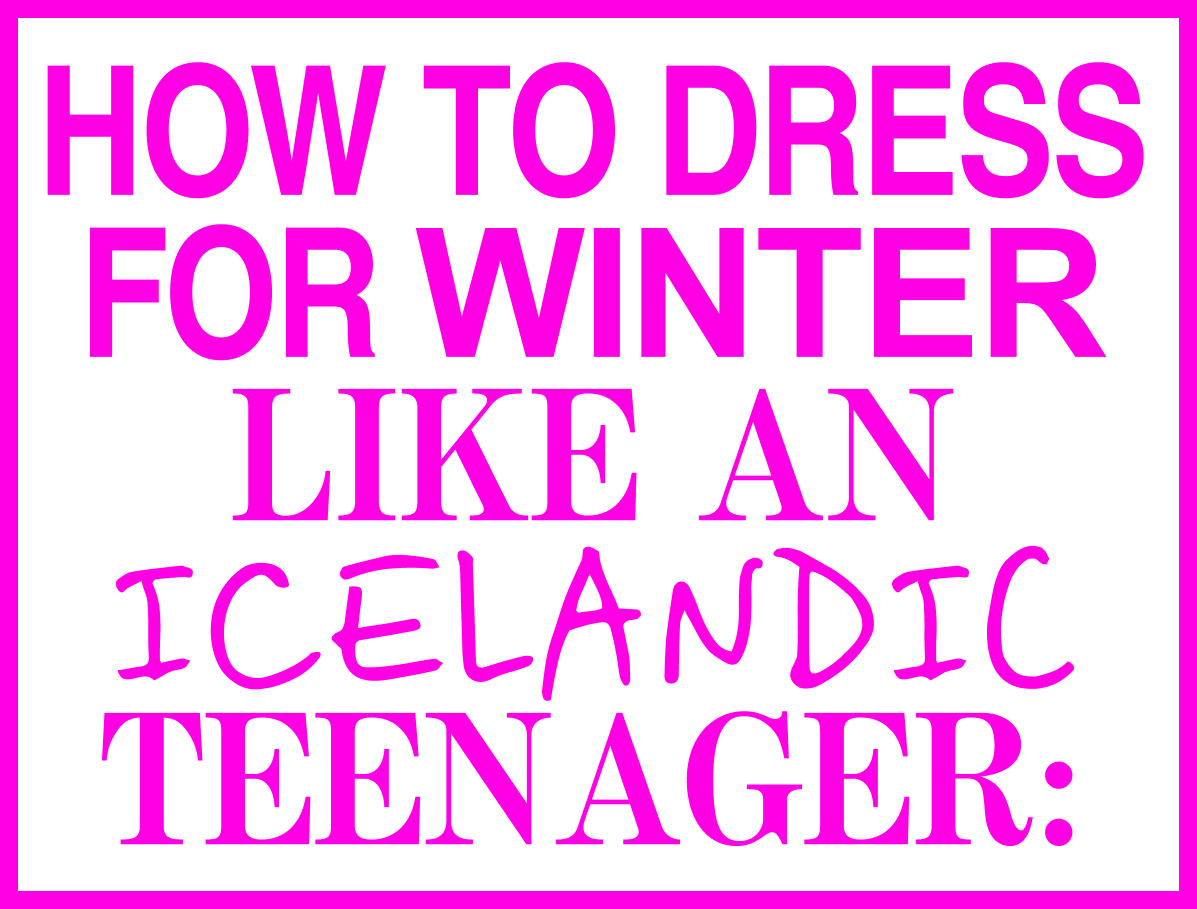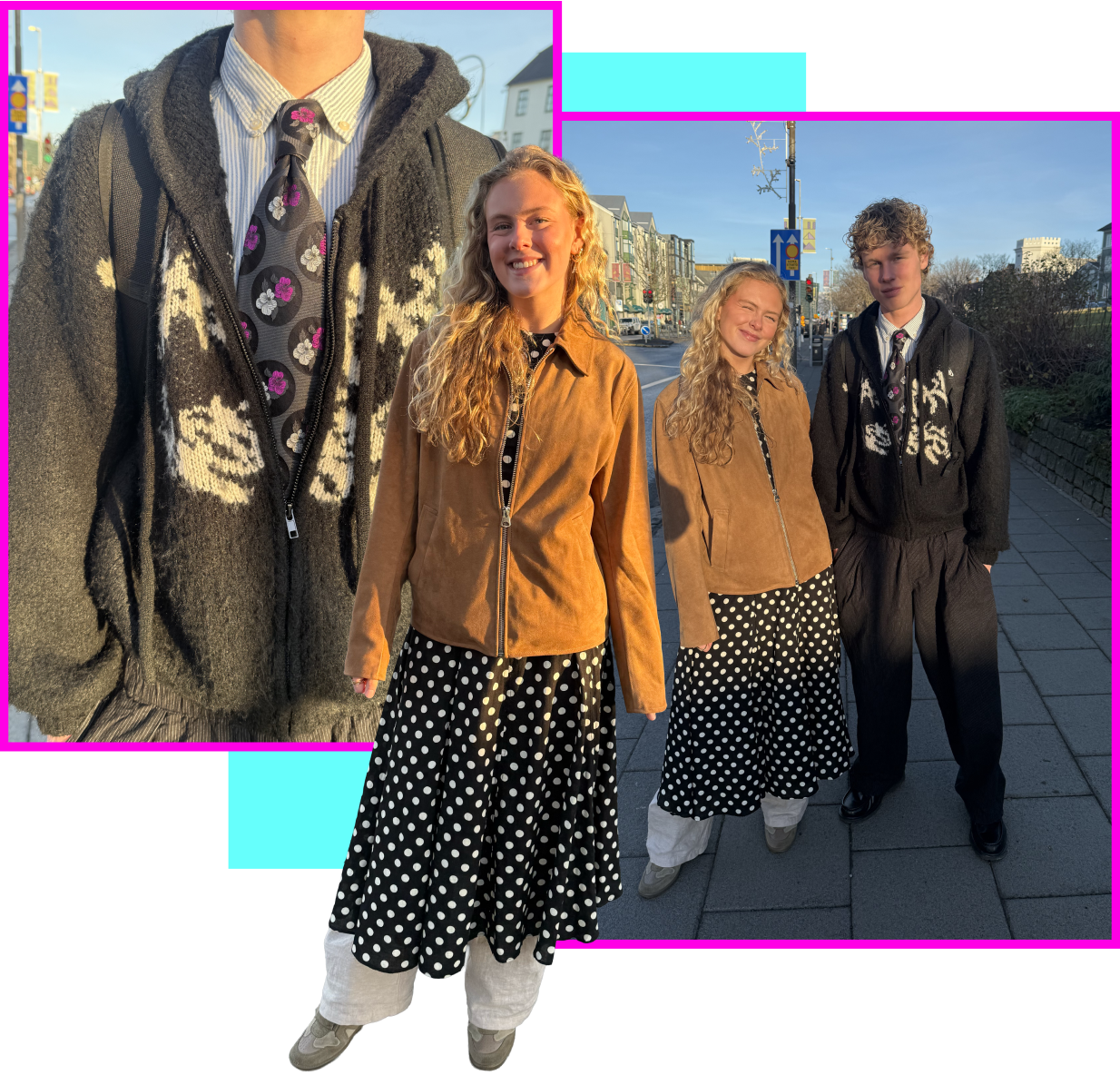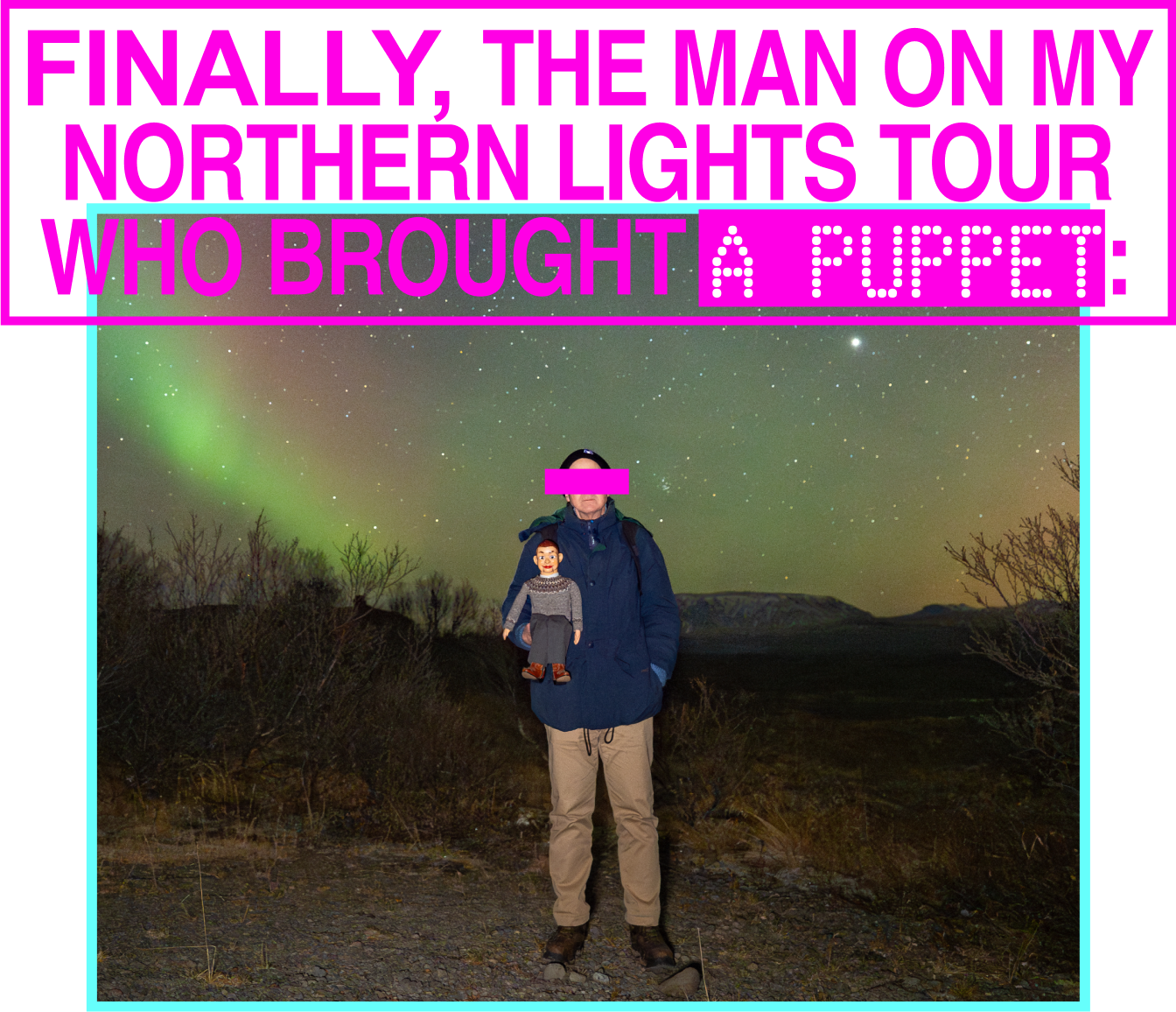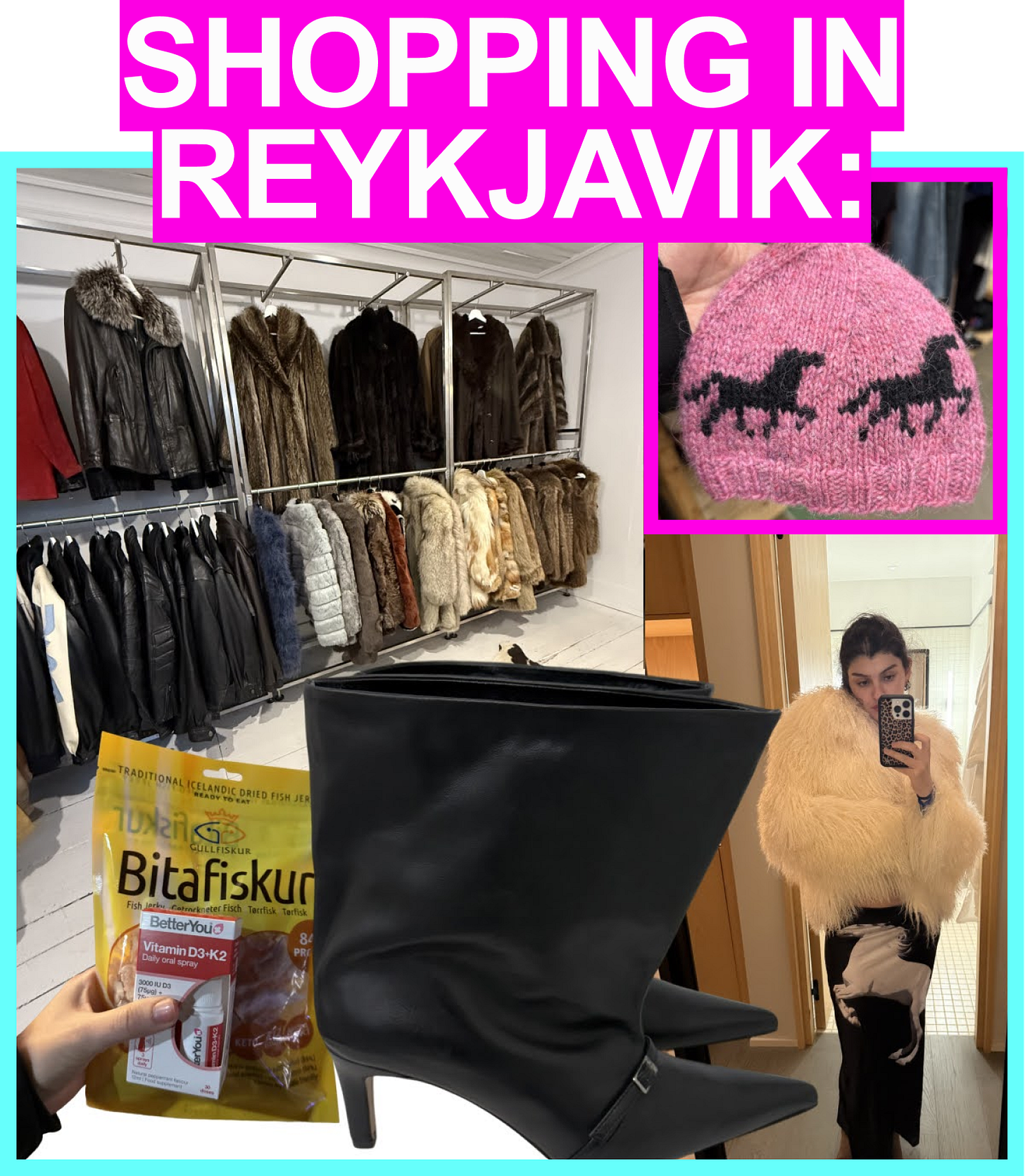How to eat shark
Inside Iceland’s murder mystery meet-up.
She mentions Hygge over dinner, over phone calls, she texts me about Hygge. Hygge is a Nordic concept, defined by Miriam Webster as “invoking or fostering a sense of coziness, contentment, and well-being.”
One thing I know to be true about myself is that I hate winter. I attribute this to having been born in August and imagine that the cold came as an assault to my wee bodily systems. I have terrible circulation, hate the long dark days, and have a bad attitude about it all. Every winter I am seasonally miserable and over the years have acquired a variety of tools to alleviate it: a SAD Lamp, a weighted blanket, a boyfriend.
This past week I had the great fortune of going to Iceland—local temperature 20 degrees, where sun the rises at 10:07 a.m. and sets at 4:18 p.m.—to attend Iceland Noir, a yearly literary festival put on by Yrsa Sigurðardóttir and Ragnar Jónasson that celebrates the moody crime subgenre as well as detective novels of all sort (hard boiled and soft), whodunnits, and fantasy. (The festival was headlined by Game of Thrones author George R.R Martin.) This was basically my dream trip: four days of sitting in various churches across Reykjavik listening to writers talk, and then returning to a beautiful hotel. And for the first time in my entire life, I feel at peace with winter.
The impetus for this revelation was a reception at the president of Iceland’s home—no, Steff, it’s not Björk) Halla Tómasdóttir. Tomasdottir generously invited all of the panelists to her home where we were greeted with sparkling white wine and Döðlugott (what I’m dubbing the Icelandic rice krispie treat, made with dates, brown butter, and a chocolate topping). To her guests she spoke about Iceland’s Sagas, the mediaeval texts documenting Scandinavian history, and how these rich stories are just as important to Iceland’s history as its more recent ones: in 1980 it was the first country in the world to democratically elect a female head of state. Vigdís Finnbogadóttir governed for 16 years. Tómasdóttir is the second female president. In Iceland there is a strong sense of history, but also a pointed futurism, leading the charge in climate change and leadership.
But even a beautiful magical land contains contradictions. I’m calling this the battle of Hygge vs. Noir. Iceland, the president pointed out, is known for its wellness, its midnight sun, its sauna culture, and its coziness, but also its noir, crime fiction set against its desolate landscape and long, dark days. How do we reconcile the two and how can we apply this to our own wintery despair?
Easily. The darkness is not to be fought, it is to be embraced.
It is a moment for reckoning with the hairy parts of your soul and solving its mysteries, for working hard and facing the elements (Noir), and it is also for soothing yourself, attending to the things that you need to attend to, connecting to yourself, your environment, and to your loved ones (Hygge). There’s a lot of bloviating around circadian rhymes and the importance of syncing up with the sun in the winter. After this week I think that’s basically horseshit (I’d recommend reading this week’s Health Gossip on not being a victim). The winter is not a time for sun-chasing, it’s a time for honoring the dark! I have been wearing two pairs of pants and a merino wool sweater for a week straight. I love the winter now. Skål!
I arrive in Reykjavik. Immediately I check into the Edition Hotel, where my room overlooks the frosty harbor and I can see steam boats coming in and out. There is a table facing the window for writing and a shag fur on the chair. I love it. I have a crab salad down at the restaurant and read Thomas Wolfe’s The Electric Kool-Aid Acid Test. Encouraged by my wonderful waitress, I end up going on a late night Aurora Borealis tour. She tells me that it was the cloudless night after a geomagnetic storm and the conditions for seeing the lights could not be more optimal. I go and the sky dances above me. More on that later.
After a literary panel on murder mysteries by Donna Moore and Jon Atli Jónasson I go to what is billed on the program as “Shark Tasting On the Balcony.” I wonder why it’s on the balcony until I step out onto the balcony and am greeted with a smell so pungent, so acrid, I am almost blown back inside. I am offered a small fleshy cube with a shot of something. The bartender describes the liquor as the cheapest vodka in Iceland that teenagers drink. I have only had a cup of coffee, and it’s noon, but I bravely forge on. As a stinky fishy fermented food obsessive I am prepared to like it. I do not. It smells exactly like cat food and tastes exactly how I thought cat food might taste, except with an almost gasoline quality that lingers malevolently. The texture of Hákarl (fleshy) is secondary to the taste which hits in waves. The reason it is fermented is because sharks don’t pee like humans do and instead the urea stays in their body to hydrate them, something that when eaten is toxic to humans. This is also why it tastes like ammonia. A diplomatic diva in all leopard print named Tina said: “Not bad, between eel and herring.” Somebody with a gut of steel ate seven cubes. I am told that sharks don’t get cancer.
A potent mix of coffee, shark, and vodka in my stomach, I go to a panel on Stockholm Syndrome followed by one on suspense at Frikiirjan, a church across from a frozen lake. My final nighttime panels are on French crime by Olivier Norek, a former police chef-cum-writer, and justice and redemption by Chris Whitaker. Strikingly, both Chris and Olivier came from non-literary backgrounds and found themselves drawn to genre unexpectedly. I find that my favorite panels are given by people who had a life in the field (law, firefighting) before writing. Back at the hotel I visit the spa and feel something close to heaven. Dinner is a crazy Icelandic cod cooked in a caper sauce and a glass of wine.
I go to a panel done by Irvine Welsh the author of the seminal “the men are unwell” novel Trainspotting. Currently he’s writing a book set in Las Vegas. I ask him about the current state of masculinity, you know “the male loneliness epidemic” and how it’s changed from when he wrote Trainspotting. He blames it on our current trend toward illiteracy. Men aren’t reading or writing anymore, “Reading and writing a novel is an exploration in empathy.” After the panel he tells me about the festival, “I feel very at home here, I think it’s the climate and the way people like drinking to excess, it reminds me very much of Scotland.”
One of the amazing things about Iceland Noir is how intimate it feels. You can eat your cube of shark and see George R.R. Martin gagging next to you. The people who attend are drawn both by the writers and the excuse to see Iceland. I meet women in their sixties who went to college together, I meet a cowboy from Colorado who loves Game of Thrones and has never left the country before, I meet an aspiring romantasy writer from Norway with her mother, I meet past panelists, I meet writers hoping to network, I meet a UNESCO fellow from Seattle creating a project on contemporary feminist Icelandic literature, I meet an ex-Navy Seal, I meet a man who lives on the block, I meet a woman who doesn’t read noir but whose late husband was a crime novelist and used to come every year and now she comes by herself, I meet an Icelandic folklorist who insists Tolkien spoke Icelandic.
Colm Tóibín on young writers: “Learn to control your weekends.”
Chris Whitaker on complex historical plots: “Work across three screens- manuscript middle, right details, left is historical imagery.”
Siri Hustvedt on her favorite Emily Dickinson poems: “The best prose that you cannot paraphrase. That even at 70 you cannot fully grasp.”
Stefan Ahnhem on what he learned from George R.R. Martin: “You can kill your main character.”
Going to grocery stores and pharmacies is my favorite thing to do while traveling and I am a supplement freakazoid. At Bónus in Reykjavík, a store whose mascot is a luminescent pink pig, I went HAM! I picked up a variety of different sprayable vitamins from this brand BetterMe. I have a hard time tolerating Iron and so far the spray has been very easy to digest and hasn’t given me a stomach ache. I am OBSESSED.
One of the things that sets locals apart from tourists is winter dressing. I spotted these twins outside of the Reykjavík Women’s School. They told me: “Layering is key.” Thorhildur, who studies social studies was wearing her brother’s jacket with a pair of Isabel Marant wedges, told me, “You have to ignore the cold.” Her brother, Thorvaldur, styled his sister’s pants with a thrifted shirt and a hoodie from Reykjavík Roses.
On my northern lights tour, a tour of only 10 people, a man had brought his ventriloquist puppet. I discovered this only after we were sent the photos from the event, and I need you to imagine my SHOCK that I missed that there was an eleventh person on this tour: a puppet. He brought his wife as well but only took photos with his puppet.
Great second hand knitwear at the Red Cross. I am of the opinion that you don’t need to buy new knits.
I didn’t buy these boots but I want them BAD. Kalda also sells a range of Nicklas Skovgaard.
66 North. I’ve been borrowing my boyfriend’s puffer for the past two winters, in a defiant “I’m a New Yorker I don’t need a puffer I can survive on a wool coat and thirty sweaters” type beat, but Iceland was the final straw. I needed a puffer, specifically this one.
Mamma Mia Vintage had a really excellent collection of second hand furs.
Stella, a hosiery store run by the sweetest woman.














Googling iron spray